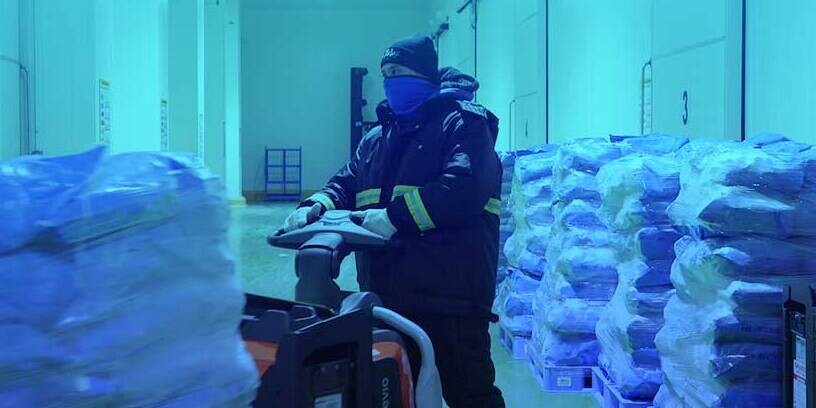
The challenge of moving your cold storage into a smart warehouse
Pressured to improve the speed of manual receiving of goods or unhappy with the time it takes to deliver customer orders? Looks like a job for a smart warehouse management.

Pressured to improve the speed of manual receiving of goods or unhappy with the time it takes to deliver customer orders? Looks like a job for a smart warehouse management.
The global cold chain market is estimated to reach almost USD 500 billion by 2025, according to a new study. The key market drivers in the cold chain economy include:
New WMS solutions benefit from the integration options into ERP solutions and automation and allow you to implement best practices for your operations. New features such as labor management, forecasting, reporting, and data analytics are key to monitoring and analysing the performance of your operations.
Customer demands are rapidly changing with an ever-increasing demand for better services and more information. Thanks to the speed of the internet available today, cold storage companies are implementing a software-as-a-service (SaaS) model which can decrease the cost for installation and infrastructure in the warehouse. Cold storage companies adopting warehouse management help them improve efficiency and stay competitive in the market.
Benefits of warehouse management in the cloud:
Step it up to a smarter cold chain – optimize your cold storage warehouse using an affordable, smart, and cutting-edge warehouse management solution from AEB.
Even though the concept of a warehouse is simple in theory, the task of designing, setting up and managing warehouses is complex and enormous in reality, requiring the right mix – of people, systems, or solutions – to run efficiently. To begin with, it cannot be ignored that a major factor affecting the industry as a whole is the aging market for warehouse labour, which creates the issue of worker scarcity and consequently increases cost. In labour-intensive industries such as warehousing, staffing is typically the largest single variable cost.
Warehousing jobs are physically demanding; thus, they are being shunned by young workers. The investment in automation allows repetitive tasks to be taken over by machines and minimises labour-related injuries.
An ever present issue relates to keeping data up to date and maintaining it across all sites to ensure not only consistency and accuracy, but also smooth accessibility at all times. In addition, the volume of goods to handle also has doubled over the past years. Twice as many outlets may mean a wider range of product choices for customers, but it also means longer browsing periods for the staff. The longer the time, the fewer orders they can process overall. The increased expectation of tracking and tracing of orders is closely linked to the strong growth in ecommerce.
Cold storage facilities require a large investment by stakeholders. They are often located near urban areas and good infrastructure connections are needed to minimise delivery times, which in turn drives up the expense for the land available. The building needs to be fully insulated as utilities contribute to a big part of the operational expenses. Investment in automation allows for a better utilisation of the available pallet locations and provides for a higher throughput in the cold storage facility.
Tracking of products along the entire food supply chain and monitoring of the conditions of transport are key to food safety. Legislation and guidelines implemented in the past few years have developed the requirement of data capture throughout this process. Illustrative examples are the stability of the temperature during the entire process and the capturing of production batch numbers and best before or expiry dates.
The challenge with using manually-based stock is that staff can only search by one criteria, such as the product name or type, which halts productivity and limits options to improve the business process. Without appropriate systems in place, it becomes almost impossible to track goods effectively. As stock volume starts to go up, manual or paper-based systems simply cannot keep up with the constantly changing status of goods.
“Through the AEB Cold Chain WMS, we can seamlessly customize the system to manage these different types of items and with fewer errors.”
Ferdinand Tongson, Royale Cold Storage CEO